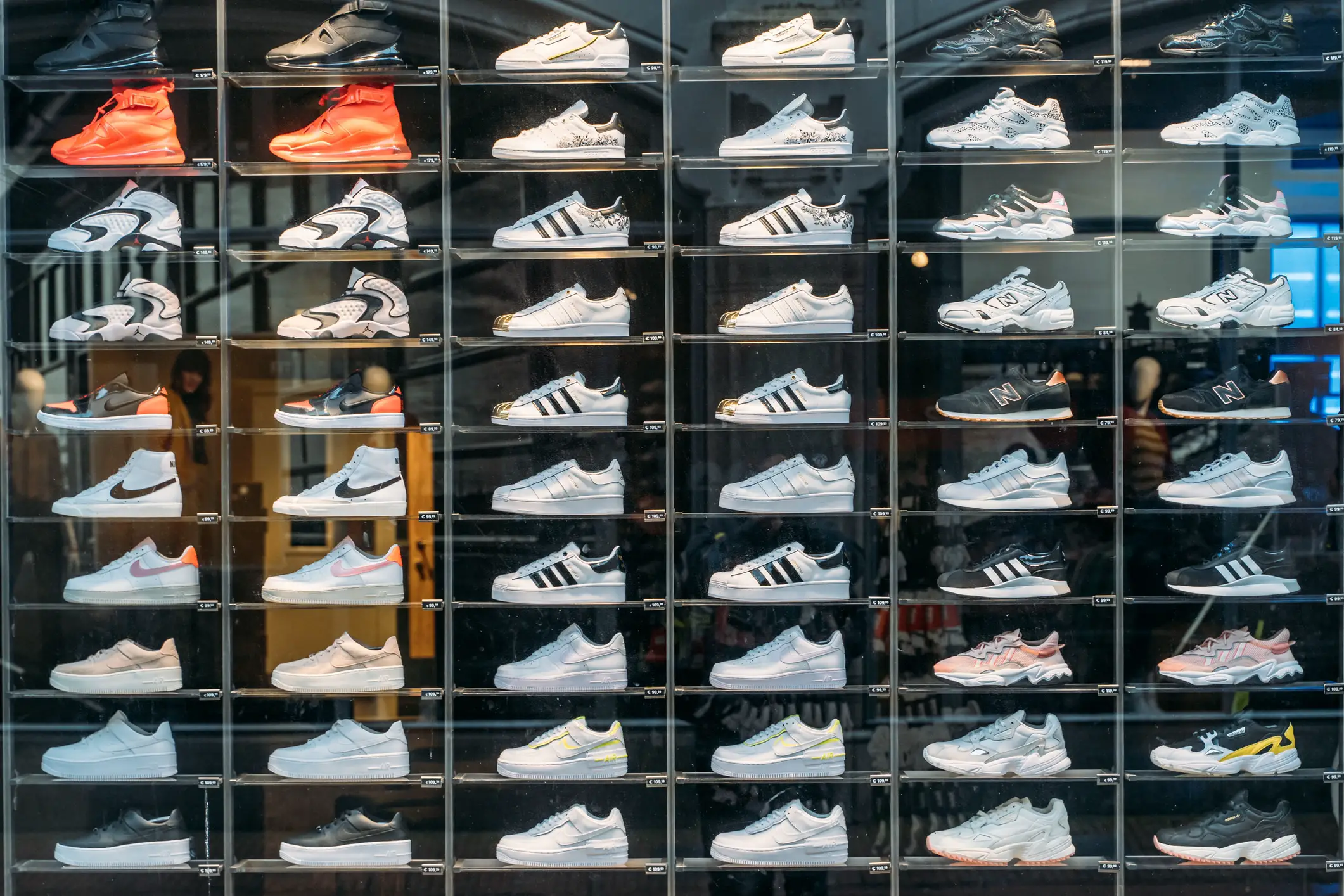There are tons of varieties of sports shoes! Just like any style of shoe, there are many different versions with many different features to choose from. If you’re looking for a new pair, then it’s best to do lots of research. You may find that you like a certain style of shoe, or that you’re looking for a very specific set of features.
If you find yourself looking for a very specific type of shoe, the chances are that you are not alone. There are many large manufacturers out there that specialize in making shoes that can fit everyone. Many cheaper shoe brands make generalized styles of shoes. However, with a little research, you’ll be able to pick out the perfect shoe for you.
In this article, we are going to go over all the wide varieties of sports shoes. We’ll cover the basics, so you know what to look for in a good pair of shoes. We are also going to dive deep into what makes specialty shoes so special.
Perhaps you have a specific foot condition that you have to think about when you buy shoes. Maybe you play a certain position in a sport, and you need shoes that differ slightly from the norm. Whatever the case, we’re going to help you find the perfect shoe for you.
Running Shoes

Running shoes are very popular, even among non-runners. A cheap pair can be used for walking, casual wear, and even yard work for some people. However, many running shoes are designed specifically with a certain type of runner in mind. If you’re buying one of these shoes, you’re most likely going to avoid mowing the lawn in them.
Related:
- Top 8 Best Running Shoe Brands that are Trusted by the Public
- What is the Average Price of Running Shoes?
- How Much of a Difference Does Running Shoes Make?
- How to Rotate Running Shoes
- How Does Heel Drop Affect Running? 8mm vs 4mm vs Zero Drop
Neutral Running Shoes
Neutral running shoes are the ideal footwear for someone with a high, inflexible arch. When you have high arches, you need a shoe that provides lots of cushioning and shock-absorption for running. Without this cushioning, a high-arched runner becomes much more prone to injury.
Related: Top 10 Best Running Shoes for High Arches
Having a high arch is known as “supination.” If you are a “supinator,” you’re going to want a shoe with a very cushioned midsole. Neutral running shoes typically have soft foam protected by EVA in to support the arch and heel during a run.
Related: What are Neutral Running Shoes | Neutral vs Stability
Stability Shoes
While someone with a high arch may need a neutral, cushioned shoe, someone who has a low arch needs a shoe that provided stability while running. When you have a low arch, it can lead to something called “over-pronation”.
Pronation is the foot’s natural tendency to roll inward just a little when walking or running. Some pronation is completely normal. Over-pronation can lead to an ankle injury, especially if the ankle gets rolled to hard.
Stability shoes typically have polyurethane materials around the arch to keep the foot from rolling inward too far. They tend to be a little heavier, but they provide excellent support for low arches as well as cushioning and protection for the ankles.
Related: Stability Running Shoes – What are they?
Motion Control Shoes
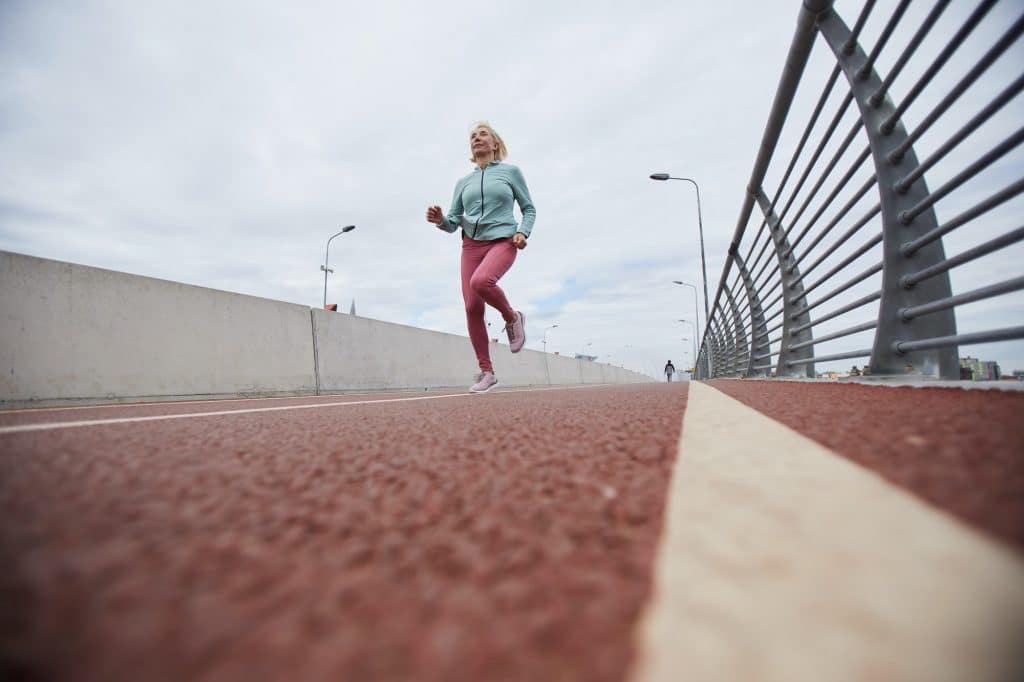
Motion control shoes are basically the extreme version of stability shoes. Where stability shoes are designed for over-pronators, motion control shoes are designed for severe over-pronators.
They have a similar design to stability shoes, but they provide even more support around the arch and ankle to keep the foot from rolling inward. They tend to be even heavier than their counterparts. Motion control shoes make up for this added weight by using flexible materials to keep the foot from being too rigid. If a rigid sole is needed, however, there are plenty of options available to make the sole more firm.
Related: Difference between Stability and Motion Control Running Shoes
Minimalist Shoes
In a departure from the previous shoes that aim to control a runner’s stride, the minimalist shoe is designed to allow the body to take its natural running gait. Minimalist shoes are made under the idea that your body should be allowed to run naturally.
While many runners tout these shoes as the clear winner in any contest, studies have shown that they can lead to more injury among less experienced runners. If you’re looking into a minimalist shoe, it’s a good idea to make sure you’re very experienced. You may even want to work on some foot, ankle, and leg conditioning to make sure your body is prepared to work harder at stabilization during a run.
Related: Minimalist Running Shoes & Barefoot Running Shoes | Complete Guide
Maximalist Shoes
As the name suggests, these shoes are the complete opposite of minimalist running shoes. Maximalist running shoes are all about comfort and support. They tend to be very bulky, but they have tons of cushioning and shock absorption for a super comfortable run.
These shoes are feature very thick soles and snug fit for comfort. The goal of a maximalist shoe is to let a runner use their natural gait in a safe way. Unlike minimalist shoes, they provide a cushion to help avoid injury to the over or under-pronator, as well as runners with high and rigid arches.
Related: What is a Maximalist Running Shoe? Maximalist vs Minimalist Shoes
Trail Running Shoes

Trail running shoes are exactly what they sound like. These shoes are designed to go off-road. They have all the traction and cushioning necessary to run over rough and slippery terrain. Trail shoes typically have more protection features around the ankles to keep you from twisting your ankle on a stray rock or root.
They also may have collars that help keep debris out from inside of your shoes. While you can use trail shoes on the road, it will wear down their tread faster. Trail shoes have a softer tread that is designed to absorb and cushion on more uneven surfaces like dirt.
Related:
Training Shoes
While many exercise routines include running, it may not be the main part of your workout. A good pair of trainers should be versatile enough for you to perform whatever workout you plan to do.
Cross Training Shoes
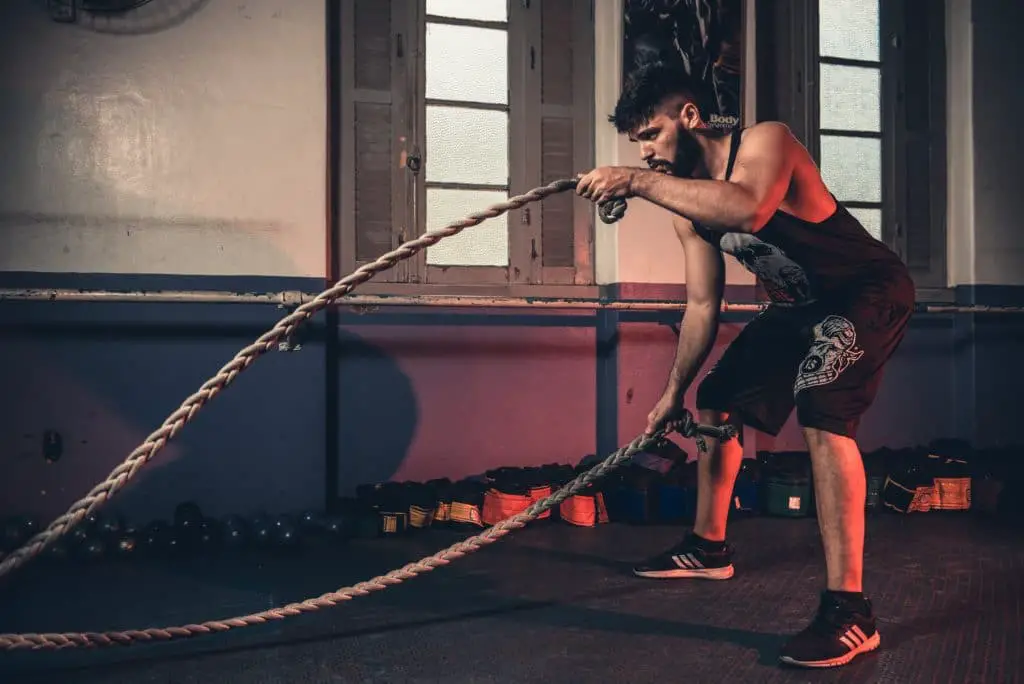
Cross trainers are the ultimate all-purpose shoe. They’re designed for cross-fit, weight lifting, aerobics, HIIT workouts, yoga, and much more. They tend to have a lot of the same characteristics as running shoes, but they give more flexibility and range of motion. Running shoes are designed to go forward only. Cross trainers are built to let you jump, swivel, and run in any direction. If you’re looking for a pair of shoes that will let you play sports, do cross-fit, go on a run, and do pretty much any physical activities, then cross trainers are the way to go.
They may not be as specialized as specific running shoes or shoes geared for just one sport, but they’ll get the job done. Be aware that cross trainers typically will not have supports for foot issues like Plantar Fasciitis, high arches, or low arches. For these issues, you’ll probably want to get more specialized shoes.
Related:
- What are Cross Training Shoes? Types | Difference | Usage
- Best Cross Training Shoes for Men
- Best Cross Training Shoes for Women
Weightlifting Shoes
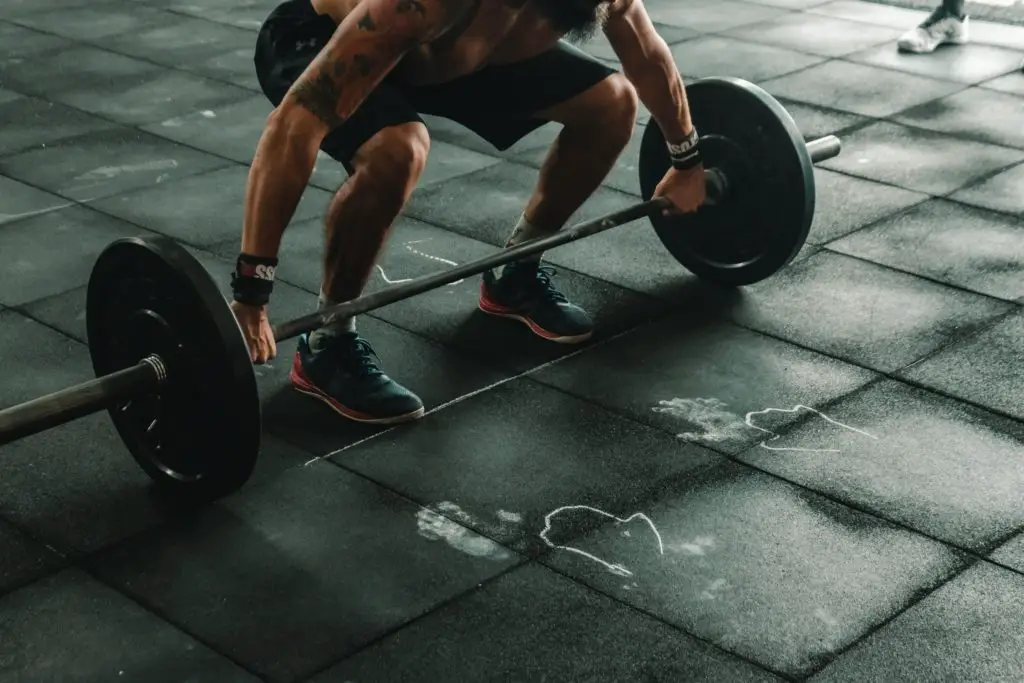
Because weightlifters shoulder such heavy loads, many weightlifting shoes features a raised heel to support the ankle and give you better range of motion. This will actually allow you to perform a deeper squat and hit more muscles as you lift. A good range of motion in the ankle and heel can actually improve your posture and form as well.
Weightlifting shoes provide extra support all around your foot in an effort to give you a wider support base. Having this strong base allows you to push weights up and around without worry of injury. If you have a good foundation, you’ll find your training to be much easier.
Walking Shoes
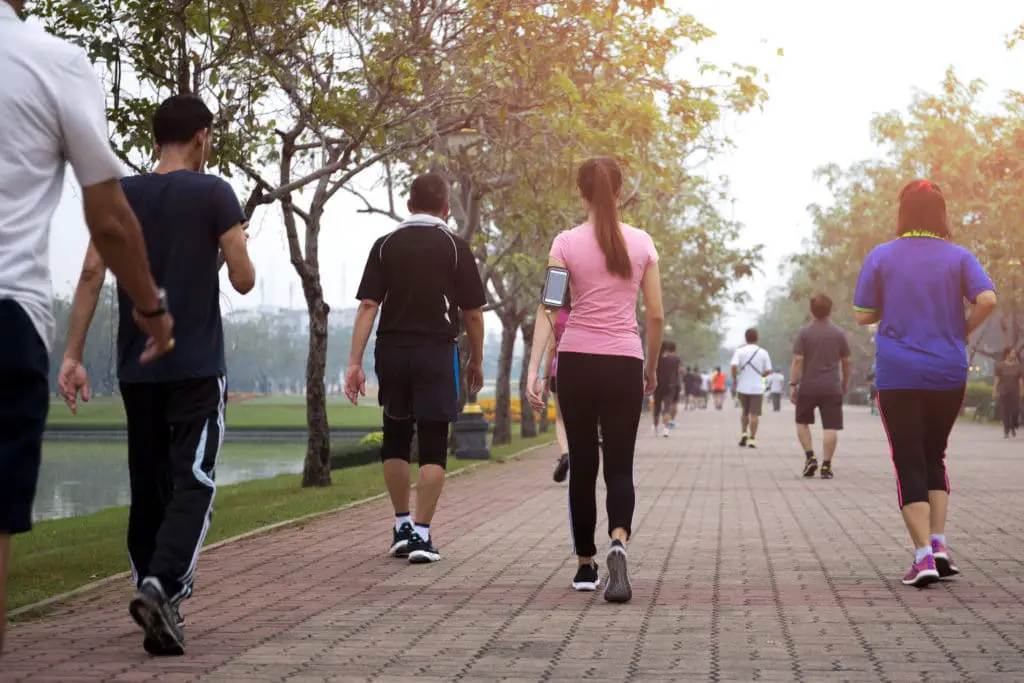
If you love to walk, you’re going to want a lightweight shoe with plenty of cushioning in the heel and ball of your foot. These are the two points where weight is typically distributed as you walk. A good pair of walking shoes will have a slightly rounded shoe to help your foot smoothly shift from the heels to the balls of your feet as you walk.
Walking shoes need to provide a secure and stable platform for your feet to help you go the distance. The sole should give you plenty of cushioning while still giving you enough flexibility to comfortably walk. You should also look at how breathable the upper of the shoe is. It should feel snug on your foot, but not uncomfortably so.
Related:
- Are Minimalist Shoes Good for Walking? Pros and Cons
- Top 25 Best Walking Shoes
- Does Walking Tone Your Butt? Answers | Alternatives | Examples
- Is Walking Every Day Enough Exercise? Answers & Explanation
Sports Shoes
Now we’re getting into shoes for specific sports. These are shoes for sports that take place on courts and hard surfaces.
Basketball Shoes

Basketball shoes have to allow a player to stop on a dime and turn in any direction. Basketball has players running and jumping all over the court, so if you have a shoe that doesn’t provide you with stability and support, you’re in trouble. Having a shock absorbing sole, especially around the heel and the ball of the foot is key.
Basketball shoes also have to provide flexible ankle supports to help protect the feet from injury. If you’re playing basketball, then you’re definitely at risk of twisting your ankles. But, you also have to be able to use your ankles to stop and turn quickly. That’s why these flexible ankle supports are so important.
A good pair of shoes won’t help your basketball skills, but they’ll help you to function at a higher level on the court. You won’t have to worry about your shoes slipping out from under you, and you won’t have to worry about injuring yourself out on the court.
Related:
- Top 25 Best Basketball Shoes for Guards | Forwards | Centers
- What Basketball Shoes are Good for Outdoors?
- What Basketball Shoes Have Good Grip?
Tennis Shoes
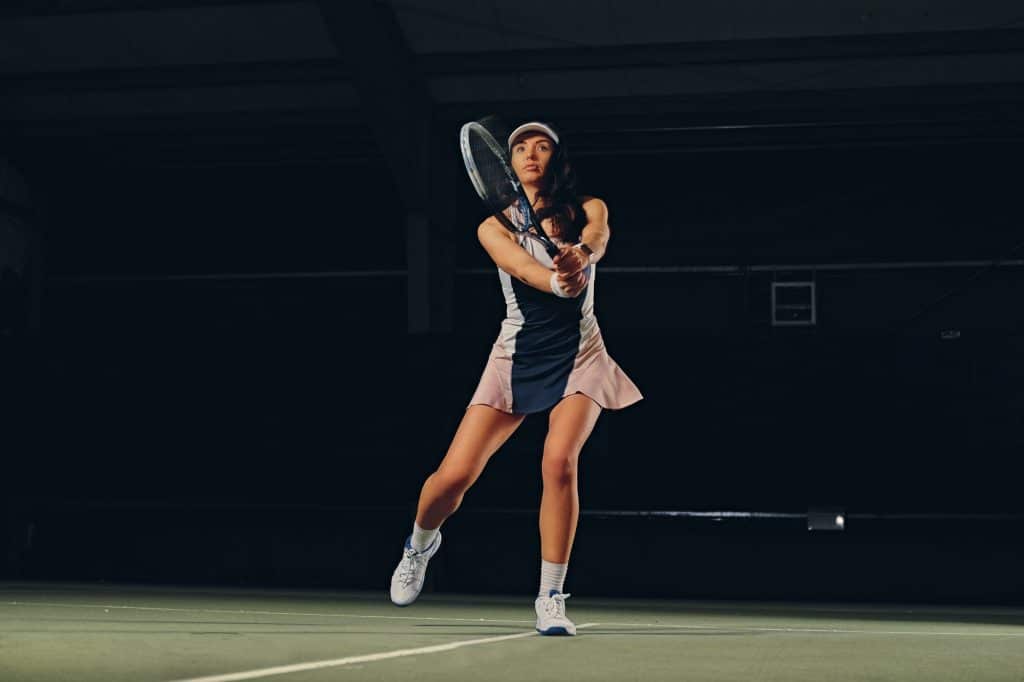
While you may hear the term “tennis shoe” used to describe a wide variety of shoes, most of these are not truly designed for playing tennis. tennis shoes typically have flexible rubber soles, and a canvas or leather upper that is designed to stretch and flex as the player moves.
The original tennis shoe was actually the basis for almost all athletic shoes that have been designed since. Now, tennis shoes features more cushioning and balance in areas most used by the athletes. They also have even better traction than the original version.
tennis shoes have to provide support not only on the outside of the shoe, but on the inside as well. There are a lot of lateral movements in tennis, so the sole has to be flexible. Your foot also needs to be snugly in place inside the shoe to keep it from slipping.
If you don’t have a flexible shoe, you’re going to have a hard time making those quick adjustments and keeping up with the ball. A good tennis shoe is very different from today’s running and walking shoes. You can even specialize what kind of shoe you get depending on if you’re playing on a hard court or a soft court.
Related:
- Top 15 best tennis shoes
- What is the average cost of tennis shoes?
- Differences between tennis shoes and sneakers
Badminton Shoes
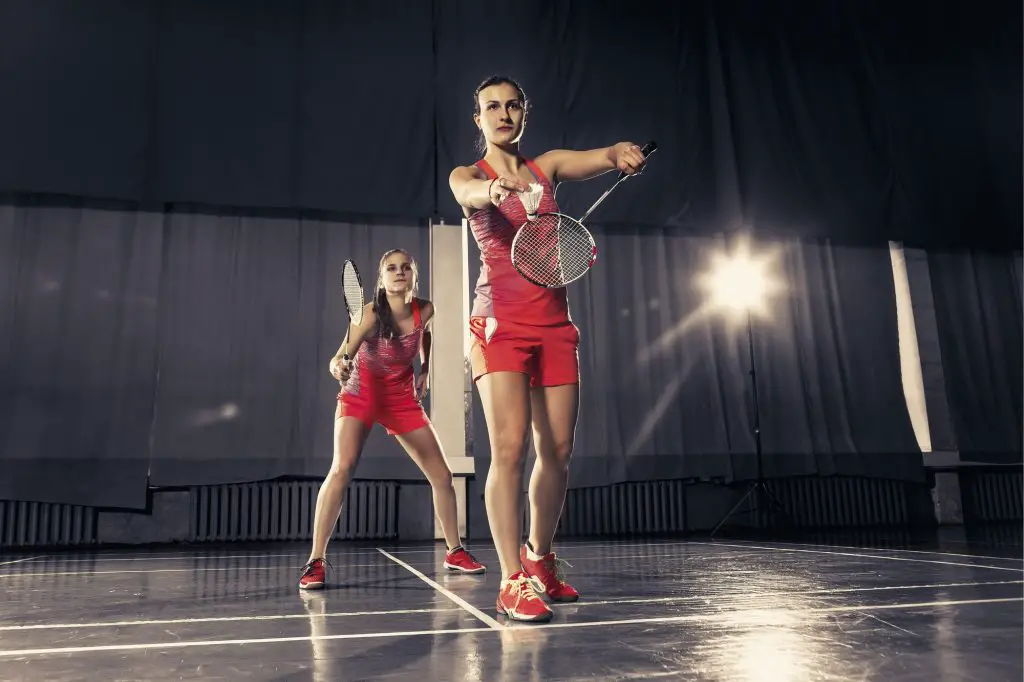
Badminton shoes have better anti slip and durable rubber than regular sneakers for indoor sports. They are also distinctively designed to play badminton. When it comes with shock absorption, badminton shoes are somewhere in the middle between cross training shoes and running shoes.
They are also considered as one of the most common non-marking shoes. They are more resistant in leaving marks on the floor compared to other athletic shoes. Some of the sports that are considered non marking shoes are:
- Badminton
- Basketball
- Indoor Tennis
- Dance
- Boating
- Bowling
- Racquetball
Related: Best Non Marking Shoes for Badminton | Volleyball | Racquetball
Wrestling Shoes
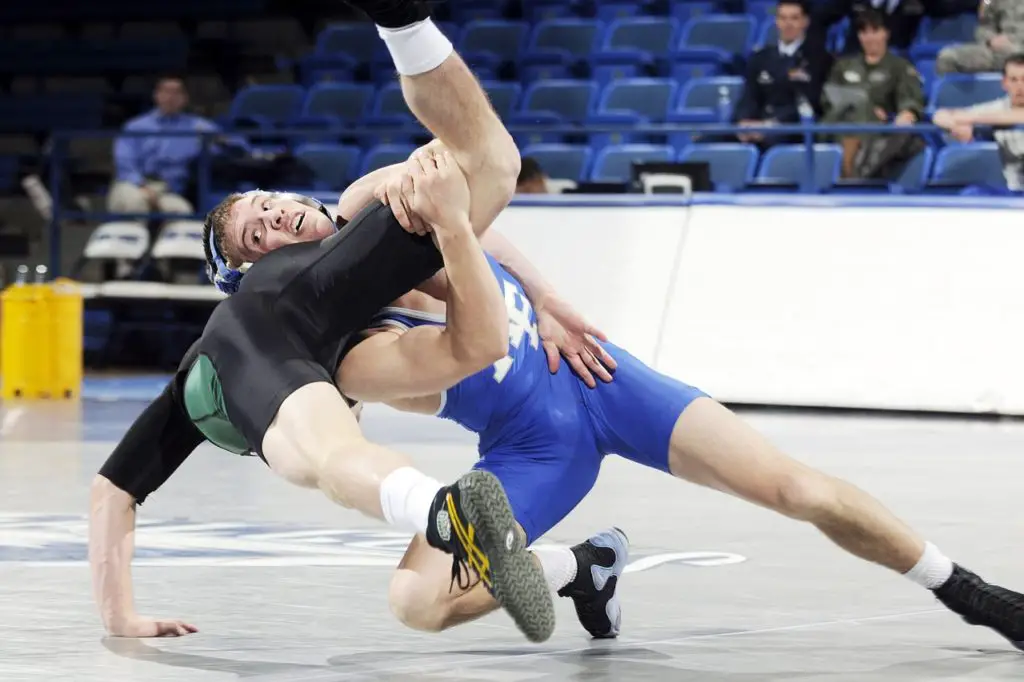
Wrestling shoes are all about grip. A good wrestler has to drive from their feet to get good holds and grips. Wrestling shoes aim to mimic the natural shape and movement of the foot. They try to be as close to bare feet as possible to give a wrestler the most natural feeling and ease of movement. These shoes tend to have higher arches to help a wrestler to push off from their toes and keep them quick and mobile.
One big problem wrestlers face is injuries and infections such as athletes foot. To prevent injuries, wrestling shoes tend to be very flexible and lightweight. They also feature plenty of ankle support. To prevent infections, these shoes typically have antibacterial materials in them. Be sure to do your research and buy a good pair of shoes that will help you avoid these issues.
Boxing shoes
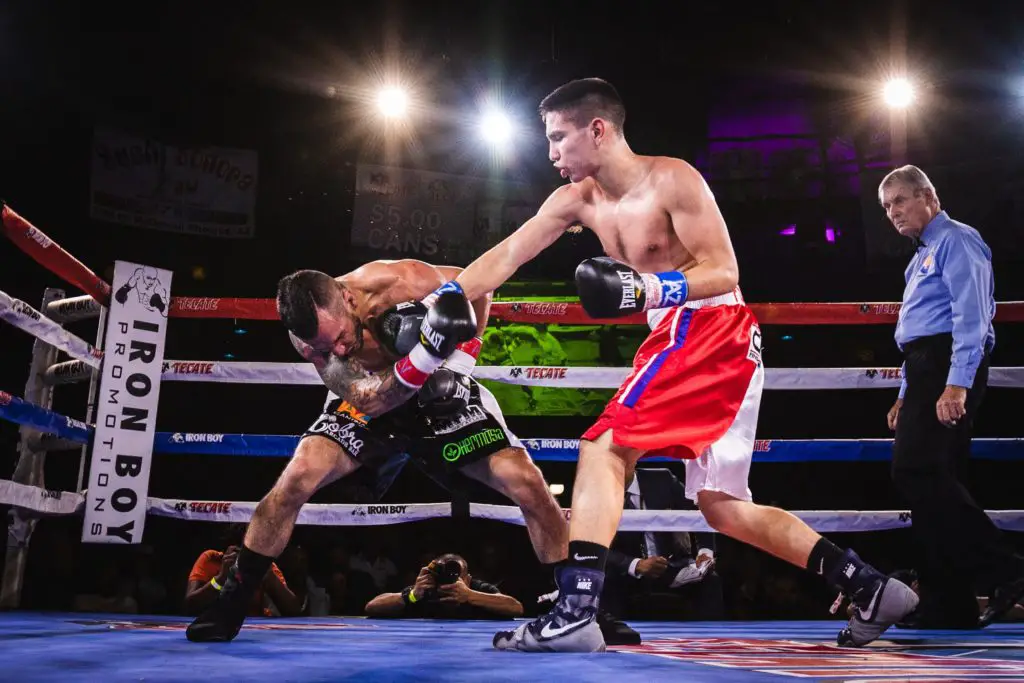
Boxers spend a lot of time on the balls of their feet. They have to be ready to duck and dodge at a moment’s notice, so a good pair of shoes is all-important. If you don’t have total control of your movements while boxing, you’re probably going to take a good hit from your opponent’s gloves.
Boxing shoes have to be lightweight and comfortable. They have to fit your specific foot shape so that you barely know they are there. Boxer’s shoes also need to provide good traction and support for sudden stops in the ring. If you try on a pair of shoes and you feel uncomfortable lumps, scratchy materials, or any other issues, then try on a new pair. You have to feel like the shoes are an extension of your feet. Otherwise they will bother you the whole match.
Related: Best Shoes for Kickboxing & Cardio Kickboxing Class
Bowling Shoes

Bowling shoes are unlike many other sports shoes. They aren’t designed for traction, but they actually allow the bowler to slide a little on the floor. This sliding is what allows a good bowler to send the ball down the lane with good form. A smooth glide up to the line is essential to get a solid strike. However, there is some traction involved as you need to be able to stop yourself before you go over the line.
Bowling shoes also help to preserve the integrity of the lanes. Harder soled shoes would mark up the lanes and possibly even cause damage.
Skateboarding Shoes
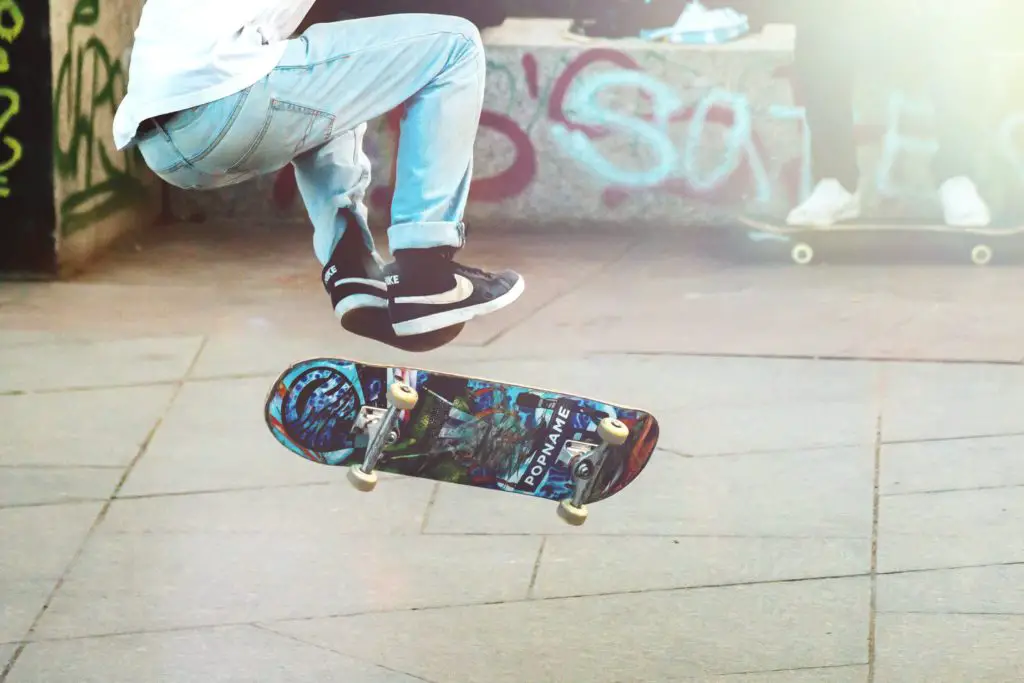
Skateboarding shoes (or skate shoes) are designed with both style and grip in mind. Most skateboards are equipped with a top layer of grip tape to help keep skaters from slipping. However, you still need a shoe that has the right kind of sole to grip onto this material.
A good skateboarding shoe has a rubber or polyurethane sole with very little tread pattern. Some shoes have no tread pattern at all. Skate shoes typically have a thick, padded tongue for comfort. They also have uppers made of triple-stitched leather or suede. This provides a lot of durability to the shoes.
Skateboarding can be very hard on a pair of shoes. Many skateboarders find that they go through shoes very quickly. A good skateboarding shoe should be made of high-quality suede or leather upper and have lace protectors to keep the laces from fraying and breaking on the grip tape.
Ice Skates

Ice skates are considered an extreme specialty shoe. You wouldn’t be able to wear them on a walk around the town. They are equipped on the bottom with metal blades to help the wearer easily glide across the ice.
The boots of ice skates are typically very rigid. However, a good pair should also feature a lot of flexible ankle support to help prevent injury while skating. They tend to be made of lightweight, breathable materials. For athletes on the ice, it is also important to have moisture-wicking materials lining the inside of the shoe. If moisture is absorbed into the skate, it can cause blisters and severe discomfort.
Ballet Shoes
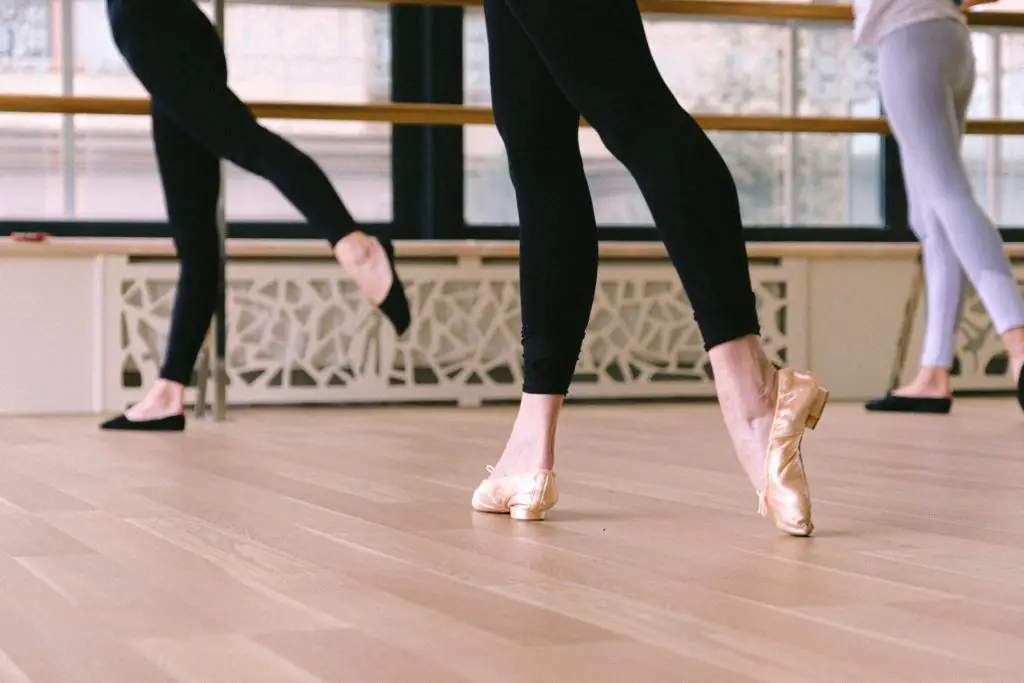
Another shoe that may be hard to wear out on the town is a ballet shoe. Ballet shoes are designed solely for the purpose of dancing. They are lightweight and extremely flexible. Thanks to their design, they are also known as ballet slippers.
These shoes or slippers are usually made of very soft materials like leather, canvas, and satin. Their durability will depend on the materials used. Leather ballet shoes tend to last longer. Canvas ballet shoes are typically cheaper, but they don’t have the lifespan of a good leather ballet shoe. Satin shoes wear out extremely quickly, but they are used in performances when appearance is very important.
New ballet shoes may have a feature called a split sole. This gives extra flexibility to the dancer’s foot while performing. The sole will typically not reach the edges of the shoe. The goal of a good ballet shoe or slipper is to be as unobtrusive as possible.
Related: 8 Best Ballet Shoes and How to Pick the Right Pair
Yoga Shoes
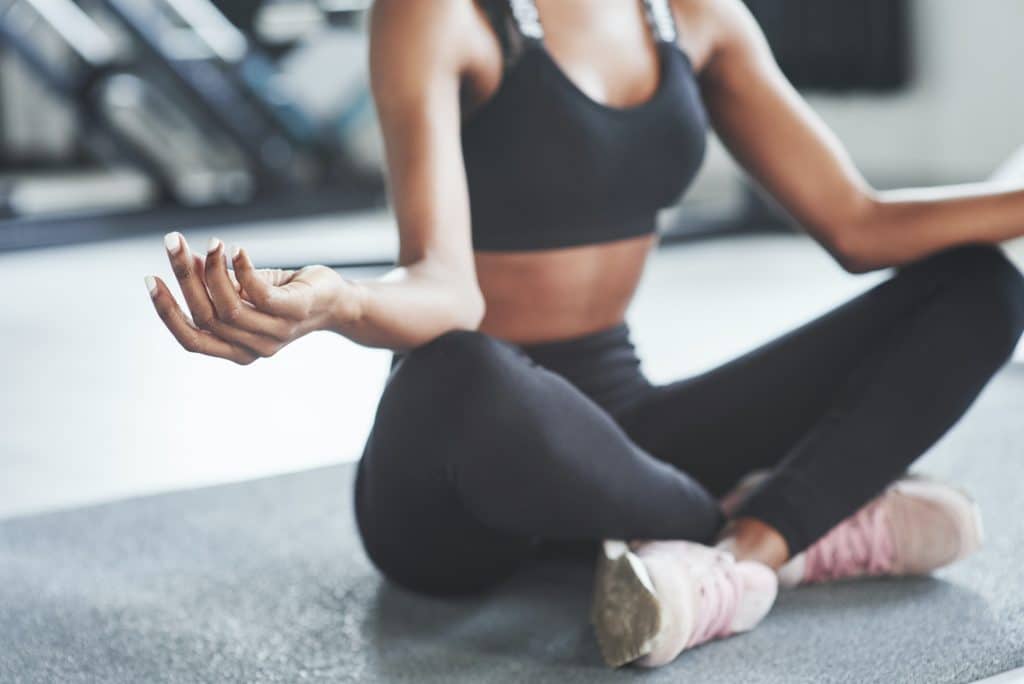
Yoga shoes can come in a variety of different types. There are people who are looking for a lightweight sneakers for outdoor yoga or simply for better grip, and there are people who wear grip socks or wraps because their yoga class does not allow sneakers and they don’t want to go in barefoot for hygiene concerns. Toe type shoes will be considered as somewhere in the middle between socks and sneakers. Here are the difference between the 3 types of yoga shoes:
- Thin wrap Type: These are the cheapest and lightest. You can find them very cheap on Amazon for around $8-$15. They are very thin and they almost feel like barefoot.
- Toe Type: These are average price and normally cheaper than outdoor athletic shoes. They are minimalist shoes and have individual toe slots to allow toe movement.
- Sneaker Type: These are more expensive and great for gym class or outdoor yoga. They are very firm compared to wraps and toe shoes and have a good support.
Related: 3 Types of Yoga Shoes
Athletic Cleats
Soccer Cleats

While most cleats have a metal or plastic cleat in the toe, soccer cleats do not. If they had them, it would hinder the wearer when kicking a soccer ball across the field. These cleats are usually more form fitting that most cleats to give the wearer better foot control. In soccer, foot control is everything. Without it, a player would have trouble dribbling the ball downfield.
Soccer cleats are usually very lightweight. They are typically made of lighter leathers or microfiber materials to promote breathability. A good pair will also have moisture-wicking features to help keep the wearer comfortable during a game.
Related: Best Soccer Cleats under $200 | Under $100 | Under $50
Baseball Cleats
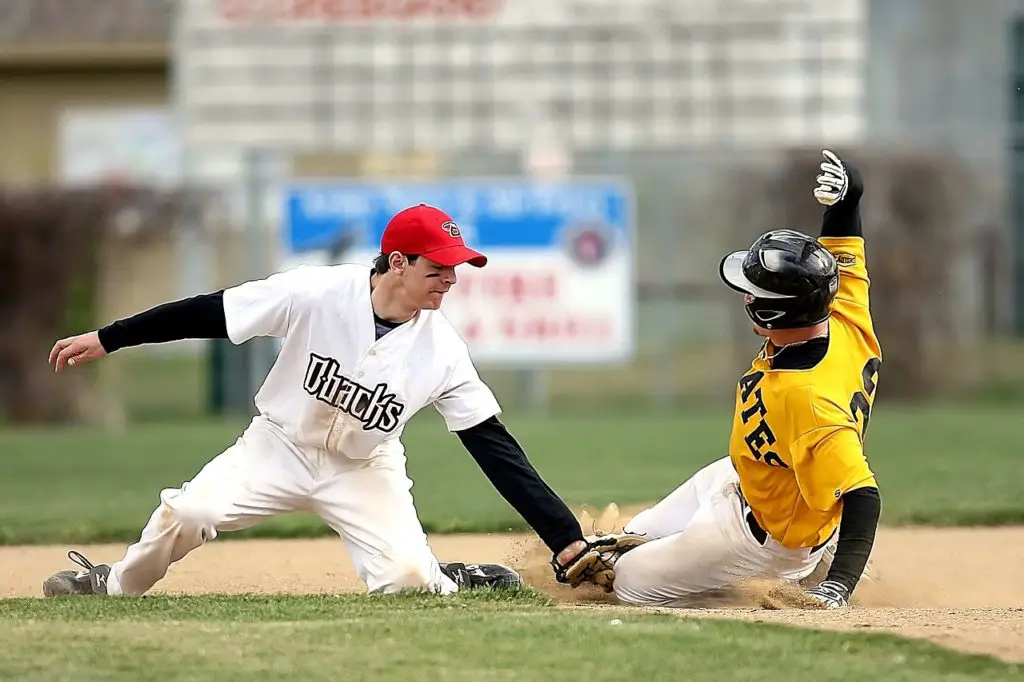
While all cleats will have a lot of similarities, each sport requires some nuanced differences in its footwear. Baseball cleats typically feature longer and narrower cleats on the bottoms of the shoe. Unlike other sports, baseball has players running across dirt and grass. They feature toe spikes to help the players get traction in the dirt when running from a base.
Baseball cleats usually have steel spikes instead of plastic. The metal helps to dig into the dirt better, and gives players much better traction and control. The uppers of the shoes are designed to be durable. They are typically made of synthetic leather in order to add life to the shoe.
Football Cleats
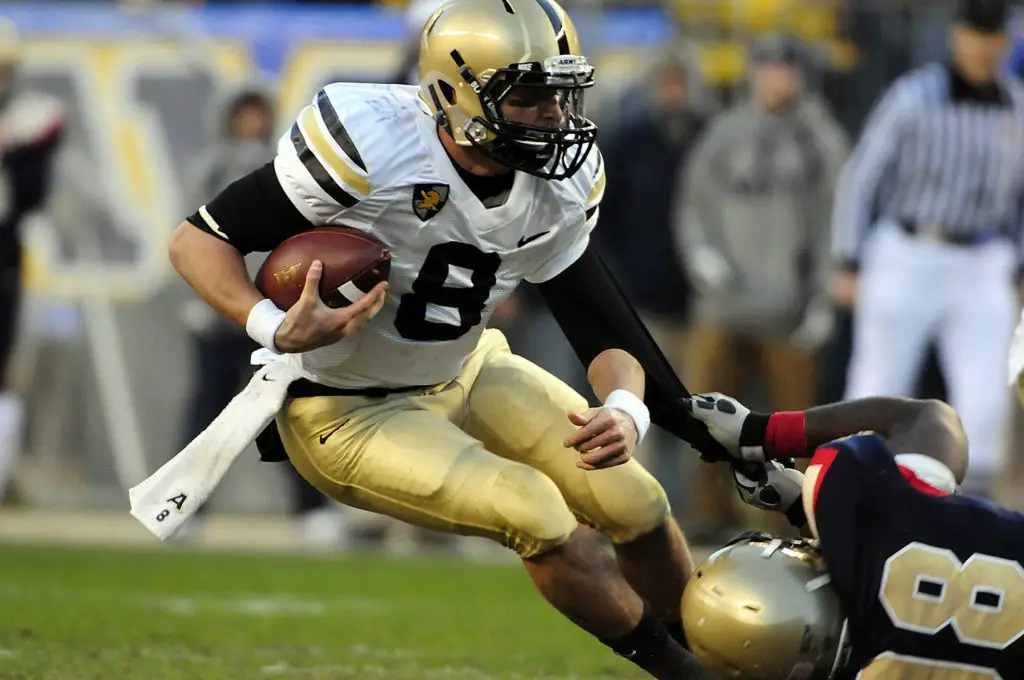
In football, all the work is done on a grass or astro-turf field. Football involves a lot of fast footwork and quick starts from a complete stop. Because of this, football cleats have shorter spikes or studs, as well as stiffer outsoles. Sometimes, they even have removable studs on the soles. This can be very advantageous because it allows the wearer to switch out the studs based on the field they are playing on. Some studs are better for real grass, and some are better for astro-turf.
The studs on football cleats also come in various sizes. Some positions (such as a linebacker) require more traction, while some (such as a running back) require more speed.
Lacrosse Cleats

Lacrosse cleats are very similar to football cleats. Both sports involve running on virtually the same grass or astro-turf surfaces. The main difference comes in the flexibility. Lacrosse cleats are a little less stiff when compared to football cleats. They feature the same front toe cleat for traction when doing quick start movements. They are designed with breathable uppers and moisture-wicking materials to help keep the wearer more comfortable during a game.
Lacrosse cleats also feature a lot of ankle support for quick movement changes in all directions. This sport involves a lot of pushing off from the feet, so lacrosse cleats usually have more support in the midsole than football cleats.
Related: What Type of Cleats Are Best for Lacrosse?
Golf Cleats

A lot of amateur golfers don’t even use golf cleats. However, a good pair can really help to upgrade your game. Golf cleats are designed specifically for the sport. They give you all the stability you need for a good solid swing. They also have features designed to increase your balance and flexibility. The cleats on the sole of a golf shoe are designed to keep the wearer from slipping and sliding during a swing.
A good golf swing requires the player to have a sturdy foundation on the ground. Golf cleats provide that foundation. These cleats are usually designed with durable, fitted leather uppers to help give the shoe a long lifespan and a stylish appearance. Golf cleats are typically more stylish in design as well.
Related:
- Do You Need Golf Shoes to Play Golf? Beginner’s Guide
- How Long do Golf Shoes Last | How Often Should You Replace Golf Shoes?
Track Cleats
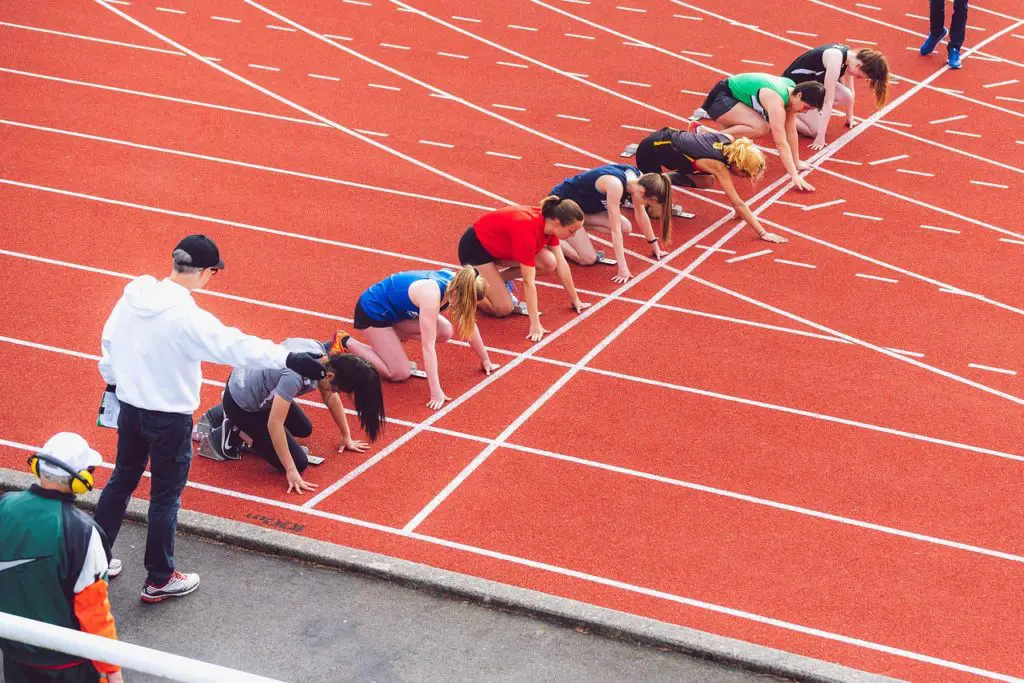
Track cleats (or track spikes) started out in the 1850’s when athletes would attach rubber soles with small spikes onto ordinary shoes for grip. Since then, track spikes have come a long way. The old track spikes used to be made of heavy, non-breathable leather and rubber.
Nowadays, track spikes are made out of lightweight and flexible synthetic materials. They tend to be more fitted, but they aren’t designed to be stiff or rigid in any way. They feature good arch support for the runners. The spikes on track shoes are very small when compared to football or lacrosse cleats. They resemble small, needle-like spikes and are typically focused on the ball of the foot and the toes. This is where a track runner will push off of the most.
Related: Do You Need Special Shoes for Track? 9 Types of Track Shoes
Hiking Boots and Shoes
Hiking Boots

Hiking boots are the heavy-duty option for the serious hiker. Their primary purpose is to help protect the ankles and the feet during long and strenuous hikes across rough, outdoor terrain. They need to be made out of high-quality and durable materials for an extremely long lifespan. In the past, hiking boots were stiff and rigid.
This made them uncomfortable for longer hikes. Nowadays, the boot-making materials have come a long way. Manufacturers are able to use durable, synthetic materials that will keep the wearer safe without having to sacrifice weight and flexibility.
Another important feature of hiking boots is their water-proofing. The most commonly used material for waterproofing is called Gore-Tex. Gore-Tex allows water to come out of the shoe, but its miniscule fibers help to prevent any moisture from getting in. Many hiking boots have higher tops for ankle protection. A good way to keep completely waterproof is to tuck your waterproofed pants into these high tops.
Related:
- 10 Best Hiking Boots for Wet Conditions | River & Rain
- Top 10 Best Trekking Boots | Get that Extra Edge
Hiking Shoes
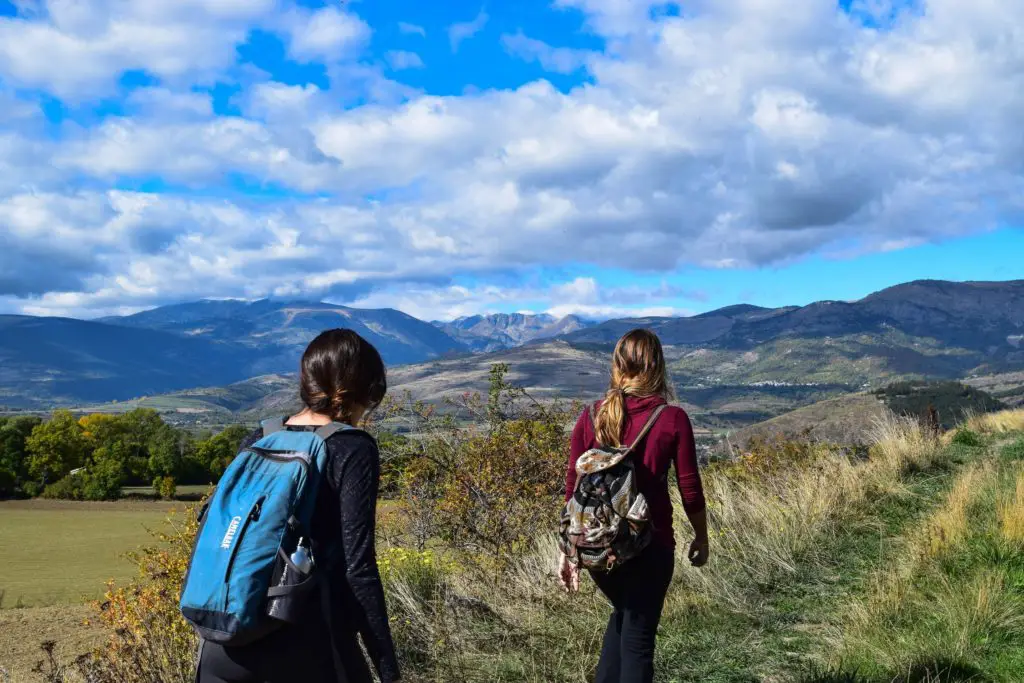
Hiking shoes are the lighter, more casual alternative to the hiking boot. They are all about being comfortable and lightweight. If you are going over terrain that you know won’t be very dangerous, hiking shoes are a great option.
Hiking shoes are a little softer and don’t require a specialized fit like hiking boots. Breathability is also a key feature of hiking shoes. They tend to use thinner materials, and so they allow the foot to breathe and keep cool. Even if you don’t have a pair of waterproof shoes, most hiking shoes are made of materials that dry extremely quickly after they have gotten wet. Hiking shoes are a great option for the traveler, as they are smaller and lighter than a sturdy pair of hiking boots.
Climbing Shoes
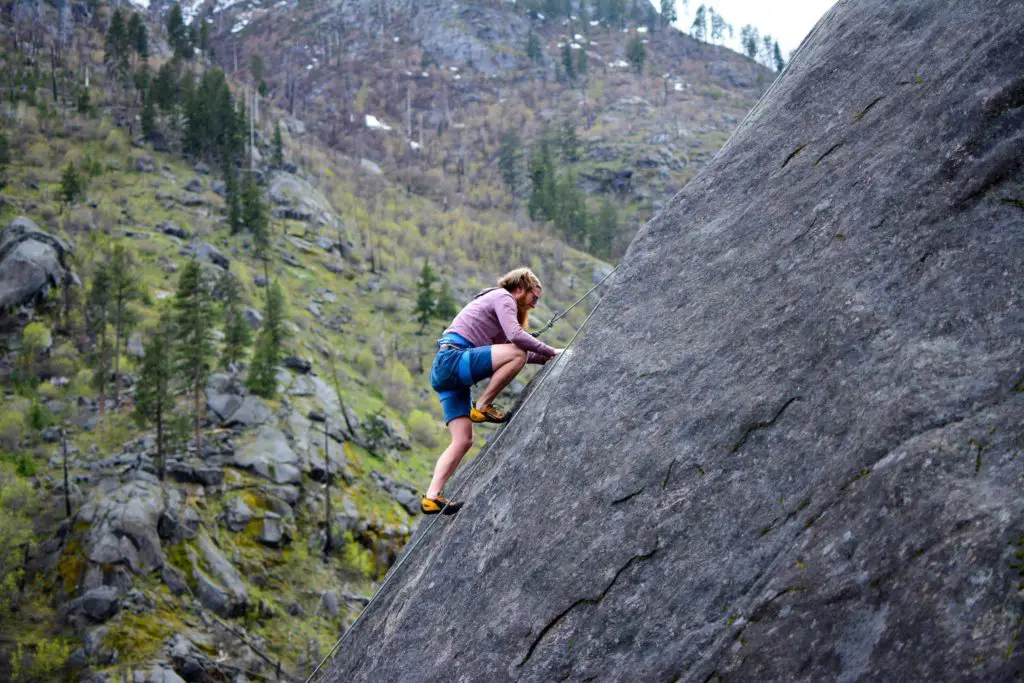
As the name suggests, these shoes are made specifically with rock climbers in mind. Because you won’t be doing much walking in climbing shoes, they usually feature very minimal padding.
The goal of a hiking shoe is to allow you to feel as much of the climbing surface as possible. This is critical to maintaining a good grip while you climb. To that end, climbing shoes have soles made out of a smooth, sticky rubber. They also have a rubber rand that wraps around the toe box of the shoe. This helps to keep the wearer’s feet safe during a climb.
Climbing shoes are typically made of leather or synthetic leather on the uppers. On occasion, a shoe may simply use fabric uppers. These types of shoes are made to be fitted perfectly to each user’s feet, so it’s important to find the right fit for you.
Related: What Shoes to Wear for Rock Climbing | Beginner’s Guide
Hiking Sandals
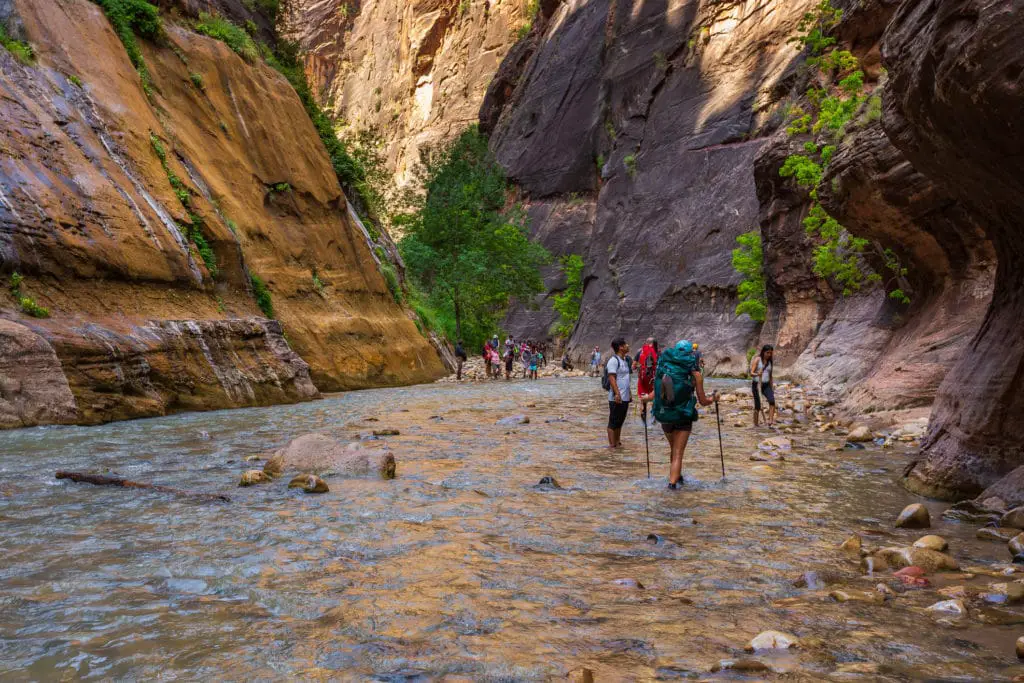
While hiking shoes are the lightweight alternative to hiking boots, hiking sandals are the lightweight alternative to hiking shoes. Hiking sandals are perfect a quick treks throughout wet areas with gentle terrain. They need to have an excellent grip for walking through slippery stream beds and going over wet, mossy rocks. Hiking sandals should also have plenty of support for your feet, and comfortable straps that won’t cause you to chafe.
Hiking sandals are definitely not ideal for long hikes through the woods. However, if you just plan to do some short hikes, then hiking sandals are the right choice for you. They are very easy to pack and travel with.
Related: Difference Between Water Shoes and Water Sandals
Biking and Riding Shoes
Mountain Biker Shoes

A good mountain biking shoe is critical in performance. When biking out on the trails, it is important to keep safety in mind. Mountain bike shoes are designed with very sturdy materials to help protect your feet during a ride. They also have a very snug fit to keep your feet from sliding around as you pedal. Many manufacturers make shoes that can lock into place on your pedals using clips. You don’t have to get a model with clips. Most shoe manufacturers make shoes that have both options, so you’ll have plenty of choices.
A good foundation is key for mountain biking. If your feet slip and slide while you pedal, you’re going to have a difficult ride. You may even develop blisters from the friction. That’s why mountain bike shoes are so fitted.
Cycling Shoes
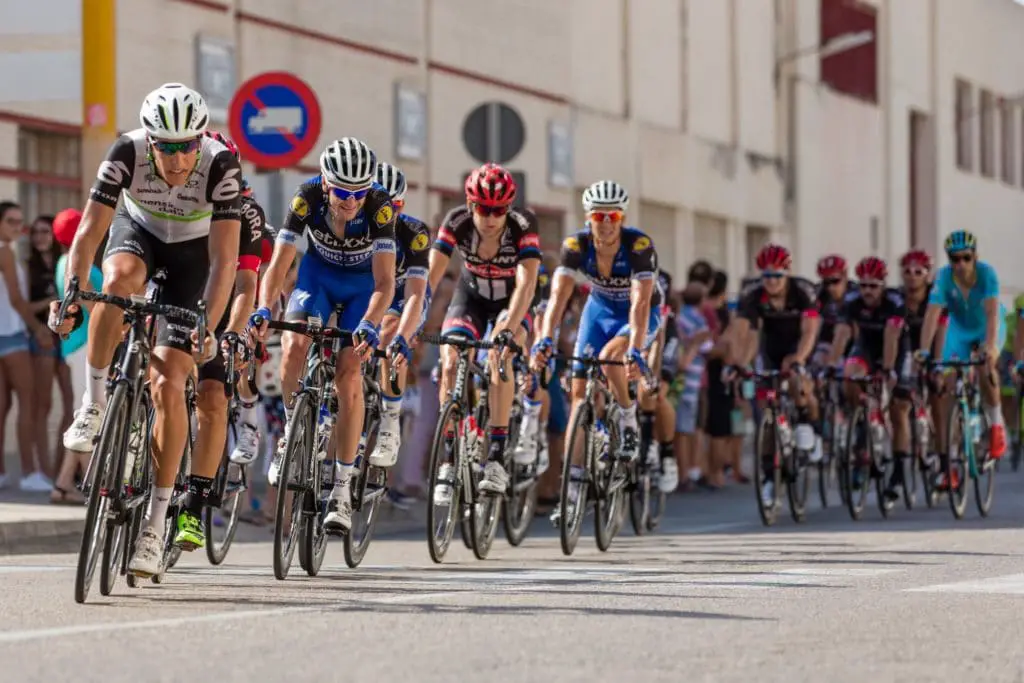
Cycling shoes are very similar to mountain bike shoes. Both come with clip on or non-clip on options, and both provide snug fitting uppers to help give you a sturdy foundation when you pedal. The big difference between the two is weight. Performance cycling shoes tend to be extremely lightweight and breathable to help the wearer achieve greater speed and performance. These shoes tend to have a very stiff sole with cleats on the outer sides of the shoe.
There are also more casual cycling shoes that would work well for an indoor cycling class, or for the casual rider. These shoes are a little more focused on comfort and less focused on performance. The soles of these shoes tend to be less stiff than performance shoes.
Related: Are Cross Training Shoes Good for Cycling?
Go Kart Shoes

Although not as common, there are actually shoes for those who drive go carts on a professional level. Karting shoes are some of the most important equipment a serious driver can have. They are also known as go-kart racing shoes, karting boots, and karting shoes.
The goal of a good pair of karting shoes is to give the driver exceptional feel for the pedals. This will give the driver the best control possible. Karting shoes also tend to be lightweight, breathable, and very comfortable. It is important to have as few distractions as possible during a race. By having comfortable shoes, a drive can eliminate at least one big distraction.
There are different varieties of athletic shoes on the market. Most of these shoes require a good fit for them to work properly, so it is important to make sure that you get to try on a pair before you buy them. Check with your local shoe store and get sizing help from an expert if you aren’t sure what you need.

Austin is the author of loveatfirstfit.com and a personal trainer with extensive knowledge in nutrition. Austin is passionate about helping others to find a suitable healthy lifestyle and feel good about themselves. Austin’s goal is to help people push their limits and achieve their physical performance.
